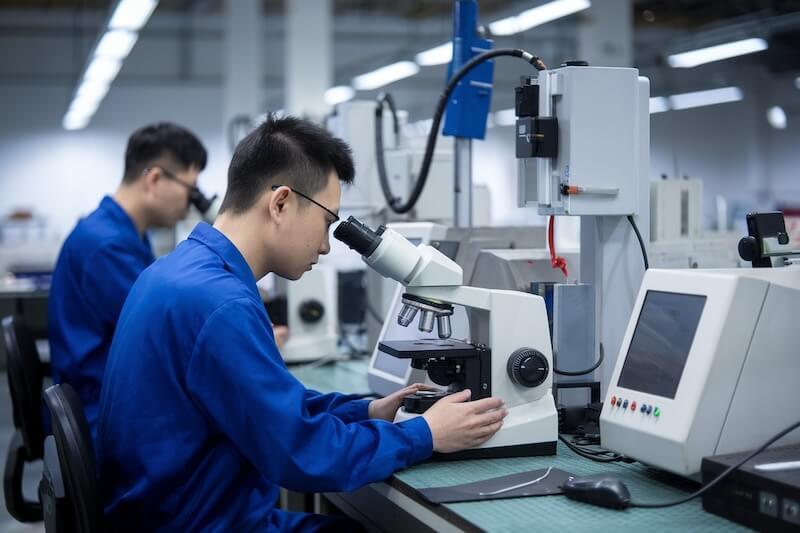Introduction

In the realm of manufacturing, the quality and precision of tools are paramount to ensuring the production of high-performance products. Tungsten carbide wear parts stand out as a superior choice for industries that demand exacting standards. This essay explores the importance of quality and precision in tungsten carbide tools and how factories can address these critical concerns to meet the needs of discerning purchasers.
The Importance of Quality and Precision
Manufacturers rely heavily on their tooling to produce components that meet exact specifications. Inaccurate or subpar tools can lead to defective products, increased waste, and higher operational costs. Tungsten carbide, known for its exceptional hardness and wear resistance, is an ideal material for creating tools that maintain their precision over extended production runs.
Dimensional Stability
Tungsten carbide tools maintain their shape and dimensions even under high stress and abrasive conditions. This dimensional stability is crucial for applications that require tight tolerances, ensuring that each part produced is consistent and reliable. Unlike softer materials, tungsten carbide does not deform easily, which means that the tools can produce parts that adhere to strict quality standards without frequent recalibrations or adjustments.
Consistent Quality
Consistency is a hallmark of high-quality manufacturing. Tungsten carbide tools provide uniform results across multiple production batches, reducing variability and enhancing overall product reliability. This consistency not only improves the end product but also streamlines the manufacturing process, as operators can rely on the tools to perform predictably without unexpected deviations.
Enhanced Surface Finishes
The ability of tungsten carbide tools to produce smooth and precise cuts contributes to superior surface finishes on manufactured parts. Smooth surfaces are essential for many applications, as they reduce friction, prevent corrosion, and enhance the aesthetic appeal of the final product. By maintaining sharp edges and minimizing burrs, tungsten carbide tools ensure that components meet the highest standards of surface integrity.
Factory Solutions to Ensure Quality and Precision

Advanced Manufacturing Techniques
To deliver high-quality and precise tungsten carbide wear parts, factories must employ advanced manufacturing techniques. This includes precision machining, rigorous quality control processes, and the use of state-of-the-art equipment. By investing in cutting-edge technology, factories can produce tools that meet the exact specifications required by modern manufacturing demands.
Stringent Quality Control
Implementing stringent quality control measures is essential for maintaining the high standards expected of tungsten carbide tools. This involves thorough inspections at every stage of the production process, from raw material selection to final product testing. By identifying and addressing defects early, factories can ensure that only the best-quality tools reach the market.
Material Selection and Composition
The quality of tungsten carbide tools is directly influenced by the composition and quality of the materials used. Factories must source high-purity tungsten carbide and optimal binder materials, such as cobalt, to create a durable and resilient composite. Precise control over the sintering process, where the carbide particles are bonded, is also crucial for achieving the desired hardness and toughness in the final product.
Customization Capabilities
Different applications require different tooling specifications. Factories that offer customization services can better meet the unique needs of their customers, ensuring that each tool is tailored to perform optimally in its intended environment. Customization can involve adjusting the geometry, coating, or material composition of the tungsten carbide tools to enhance their performance and longevity.
Technical Expertise and Support
Providing technical expertise and support is vital for ensuring that customers can maximize the benefits of their tungsten carbide wear parts. Factories should offer guidance on tool selection, maintenance practices, and optimal usage conditions. By partnering with customers and understanding their specific manufacturing challenges, factories can deliver solutions that enhance productivity and product quality.
Conclusion
Quality and precision are non-negotiable aspects of high-performance manufacturing, and tungsten carbide wear parts are indispensable in achieving these standards. By focusing on advanced manufacturing techniques, stringent quality control, careful material selection, customization capabilities, and robust technical support, tungsten carbide factories can address the critical concerns of purchasers. This commitment to excellence ensures that manufacturers can rely on their tools to produce consistent, high-quality products, ultimately driving operational efficiency and profitability.
Investing in high-quality tungsten carbide wear parts is a strategic decision that pays off through enhanced product reliability, reduced defect rates, and improved manufacturing processes. As industries continue to evolve and demand greater precision and durability, tungsten carbide tools will remain at the forefront, empowering manufacturers to meet and exceed their production goals.








